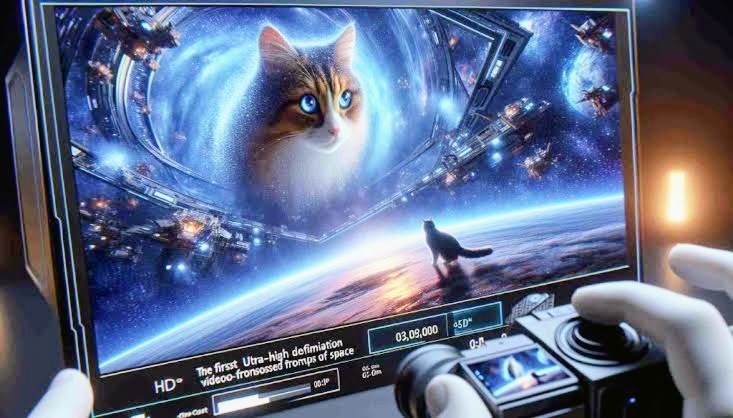NASA transmits first ultra-HD video from deep space
NASA, the United States’ space agency, has achieved an unprecedented feat by successfully transmitting an ultra-high-definition video from its Psyche spacecraft to Earth using laser communication technology.
This remarkable achievement has opened up new possibilities for space exploration and provided a glimpse of the future of communication technology in space.
The transmission, a first of its kind from deep space, covered a staggering 19 million miles, delivering the 15-second video to Earth in a mere 101 seconds.
The unique content of the video, featuring an orange cat named Taters in pursuit of a laser dot, adds a touch of whimsical charm to this ground-breaking feat.
NASA used the charming cat video to test a cutting-edge laser technology that could revolutionize the way it communicates with spacecraft and astronauts in deep space.
This is the first ultra-HD video ever streamed from deep space via laser, according to NASA.
“Despite transmitting from millions of miles away, it was able to send the video faster than most broadband internet connections,” Ryan Rogalin, who leads the project’s receiver electronics at NASA’s Jet Propulsion Laboratory, said.
“In fact, after receiving the video at Palomar [Observatory], it was sent to JPL over the internet, and that connection was slower than the signal coming from deep space,” he added.
Also Read: China to launch world’s first ‘lobster eye’ space telescope
Speeding up messages from deep space to Earth and vice versa, as well as increasing bandwidth, is crucial to NASA’s plans to send astronauts to Mars.
That’s a major new milestone for the “Deep Space Optical Communications” experiment, which is flying aboard NASA’s Psyche spacecraft to test the new laser technology.
Record-Breaking transmission speed
Psyche, which embarked on its journey in October to examine a metal-rich asteroid, sent the video at an astounding data rate of 267 Mbps. This speed surpasses the capabilities of most terrestrial broadband internet connections, marking a significant stride in space communication technology.
NASA’s Deep Space Optical Communication (DSOC), the instrument responsible for this achievement, reached this maximum bit rate through the use of a laser transceiver flight instrument.
DSOC’s successful demonstration is a crucial component in meeting NASA’s increasing data transmission requirements for scientific and exploratory objectives. It’s a giant leap towards faster and more efficient communication systems.


Comments are closed.